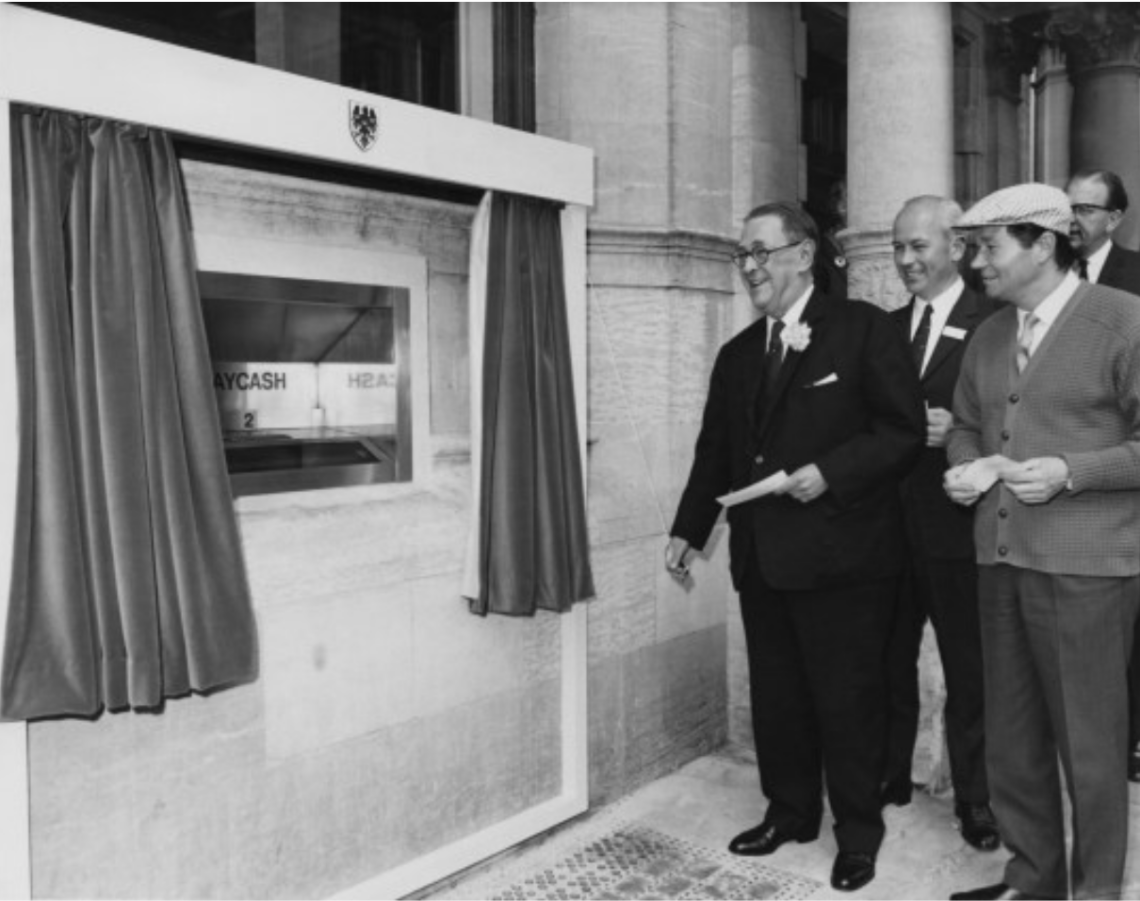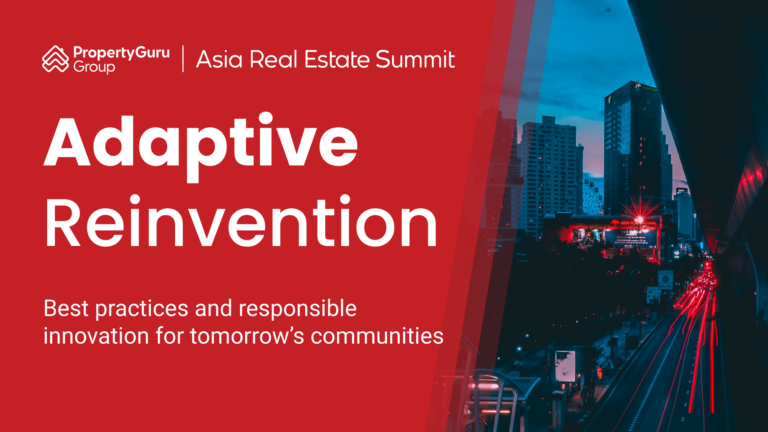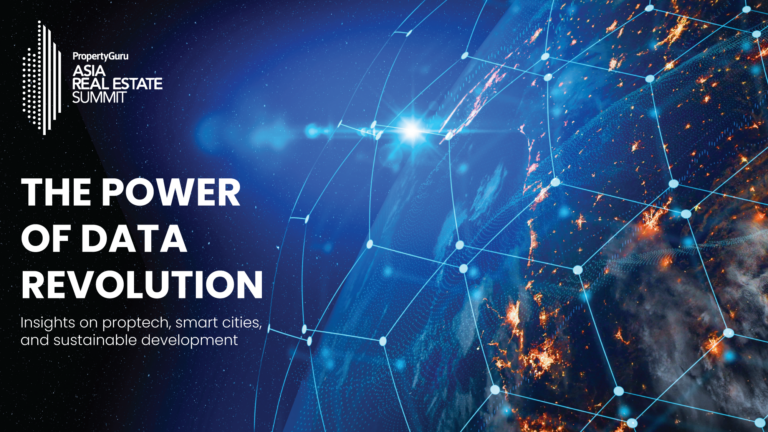What is powering our communities?
This article is based on the Chairperson’s Keynote at the PropertyGuru Asia Real Estate Summit originally presented on 7 December 2023.
Is it the expected, or the unexpected? Surprisingly, it is both.

Every generation alive today has experienced unprecedented changes that have altered their lives and their environment. Yet, within the last 50 years or more, has anything really been unexpected? Has the rate of change been fast or slow?
The adage “expect the unexpected” holds true. However, the elements of what powers our communities have arguably been within our grasp for some time now. What remains unknown is which communities will adapt, harness, and capitalise on this knowledge.
Of the top 10 companies in the world in 2000, only one remains in the top 10 today. This shows that even the most valued organisations struggle to adapt, develop, and retain their status.
Was the pandemic truly unexpected? Perhaps not. Many might even argue that the real surprise was that a pandemic hadn’t happened years or decades sooner.
What the pandemic did was accelerate changes that have long been anticipated, such as remote work, video conferencing as the usual contact medium, and a more contactless — or rather, a ‘differently connected’ — world.
Our dreams become realities
For centuries, the ability to fly was merely a dream. Then, in 1903, the ability to glide transformed into powered flight. Flying spread across the globe, and by the 1920s, commercial air travel had become extensive and widespread.


Wright Brothers first powered flight, December 1903
At what point did the ability to fly around the world transform from a dream to reality? Physically, that occurred 100 years ago. Cognitively, the ability to foresee and imagine that international flight would be possible had existed for much longer. Consider that the first untethered manned hot air balloon took flight in Paris in 1783.
Now in 2024, is there anything that we have not yet dreamed of?
To illustrate, it is no surprise that automation and technology will displace jobs. This was the premise of the start of the Industrial Revolution, and even earlier, during the Agricultural Revolution when people had less outlook on what the future might be. They knew that their tomorrows would not look like their yesterdays.
In 1967, the first automated teller machine or ATM was launched in London. Is it a surprise to anyone that the ATM would spread across the globe, that this launch would lead to greater man-to-machine interfaces? How about self-ordering at fast food and restaurants and contactless hotels — are any of these a surprise?

Perhaps the only surprise is how long it has taken for some ideas to materialise and flourish. When someone shows the way, as with commercial flight, the stages of change — precontemplation, contemplation, preparation, action, and maintenance — occur globally, but often only very gradually.
The surprising thing about video calling is not that it exists, but how long it has taken to mature and develop over the last 50 years, especially considering that the technology for effective video calling emerged in the 1960s.

All of this is to say that change, and our ability to adapt to it, powers our communities. We have long understood that everything is connected and that those who focus on strategy and implementation succeed, while those who focus on action alone often falter or fail.
We already know what powers our communities — it is “us”. It is what we dream, what we reach for, and how we connect. With this understanding, let’s explore some of the known factors at play in the real estate sector.
Technology Integration:
- Smart buildings: The integration of smart technologies into buildings includes IoT-powered sensors for monitoring and optimising energy usage, HVAC systems, and lighting. Smart buildings can also use AI for predictive maintenance, enhancing operational efficiency, and reducing costs. This technology integration, however, is still at the early stages as many buildings do not have robust and reliable data management systems.
- Digital marketing and transactions: Technology can streamline marketing and transaction processes in real estate. Online portals and virtual tours allow potential buyers and renters to explore properties remotely. The industry is also exploring blockchain technologies for their potential to simplify property transactions.
- The human factor: Technology integration doesn’t necessarily mean less human interaction; instead, it means improved experiences and higher satisfaction for guests, occupants, and visitors.
Flexible Workplaces & Workspaces:
- Work from home (WFH) setups: Technology for remote working has been available for some time, and the acceptance of WFH setups has become more widespread post-pandemic. This shift has revolutionised our approach to building design and changed how we think about activating cities and towns, as well as the nature, configuration, and location of residential buildings.
- Coworking spaces: The rise of remote work and freelancing has led to increased demand for coworking spaces worldwide. They offer amenities such as high-speed internet, shared meeting rooms, and networking events that cater to diverse workstyles and foster collaboration.
- Hybrid work environments: Designing office spaces that support hybrid work arrangements entails combining in-office and remote work capabilities. Flexible office layouts and technology infrastructure should accommodate evolving workforce needs and promote productivity.
Mixed-Use Developments:
- Urban revitalisation: Mixed-use developments vitalise cities by creating vibrant, walkable neighbourhoods. Combining residential units, retail shops, offices, restaurants, and public spaces in one well-coordinated development reduces dependence on cars and promotes enhanced senses of community and connection.
- Transit-oriented development (TOD): Integrating mixed-use developments with public transportation hubs makes it easier for residents to commute and reduces traffic congestion. TOD projects promote sustainable urban growth.
- Strategic plans: The above-mentioned factors have been integrated into strategic plans for developments, cities, and countries. These plans are often aligned with other strategic objectives, including broad economic planning and carbon neutrality assessments.
Sustainability and Green Initiatives:
- The 4 Pillars of Sustainability: The pillars (environmental, human, social, and financial) are significant factors in how and where people are choosing to live. The criteria under all pillars drive assessments and decision-making in terms of how new communities are created globally.
- Energy efficiency: Buildings are being designed with eco-friendly features such as high-performance insulation, LED lighting, and energy-efficient appliances. Renewable energy sources such as solar panels and geothermal heating are increasingly incorporated to reduce reliance on fossil fuels.
- Green building recognition: Green accreditations for materials, products, and services are evolving rapidly. Green building certifications such as Building Research Establishment Environmental Assessment Method (BREEAM) and Leadership in Energy and Environmental Design (LEED) have existed for over 20 years and are being championed worldwide.
Affordable Housing Solutions:
- Comprehensive needs: Affordable housing is no longer considered merely based on economic necessity but also on the comprehensive needs of the larger community.
- A sense of community: Traditional affordable housing objectives are essential for creating functional and efficient communities. Urban sprawl contributes to the breakdown of communities and drives international migration of skilled individuals. The need to serve populations across the economic divide has never been more crucial.
- Public-Private Partnerships (PPP): Governments and communities are partnering with private developers and nonprofit organisations to finance affordable housing projects. PPPs leverage public resources and regulatory incentives to create affordable housing units and address housing shortages.
- Innovative financing models: Innovative financing models such as impact investing and social impact bonds can fund affordable housing initiatives. These models attract capital from socially conscious investors and align financial returns with positive social outcomes.
Community Engagement and Social Impact:
- Community-driven outcomes: Greater engagement with local stakeholders, including residents, businesses, and nonprofits, to co-create projects that meet community needs has always been rewarding. Ensuring inclusivity and building trust within communities consistently leads to better, more profitable and valuable outcomes.
- Socially responsible development: Prioritising social impact by investing in affordable housing, educational facilities, healthcare centres, and cultural institutions contribute to equitable development, economic empowerment, and social cohesion. Unfortunately, the lack of appropriate assessments, strategies, and outcomes is increasingly evident globally.
Health and Wellness:
- General wellness: Failure to incorporate general wellbeing into the built environment is often evident in the suboptimal or harmful materials being used, despite the availability of sustainable technologies and systems to build healthier buildings. Individual developers and entire nations will have to address the continued development of unhealthy buildings, or they will face a difficult future.
- Wellness amenities: Developers are integrating amenities such as fitness centres, yoga studios, and meditation rooms into their residential, commercial, and mixed-use developments. These amenities promote physical fitness, mental health, and work-life balance among residents and employees.
- Biophilic design: Its principles reconnect building occupants with nature. Features such as natural light, indoor plants, and green walls, which improve air quality, reduce stress levels, and enhance overall wellbeing, are evolving and being demanded by communities everywhere.
Resilient Infrastructure:
- Climate-resilient design: The ability of structures to withstand climate change impacts such as extreme weather events, sea-level rise, and heatwaves must be considered. Resilient design includes flood-resistant systems and materials, enhanced stormwater management systems, and backup power sources. This design approach should encompass renewable energy and efficiency.
- Adaptive reuse: Projects that repurpose existing buildings and infrastructure, e.g. converting old warehouses into climate-controlled storage facilities or repurposing historic buildings as community centres, mitigate environmental impacts and preserve and enhance cultural heritage, community homogeneity, and amenities.
These initiatives and solutions not only address current challenges but also anticipate future trends to create sustainable, resilient, and thriving communities.
The forces impacting our communities are not new; nothing should surprise us. The built environment sector, quite literally, creates the mould that shapes our global communities.
What we do now, how we act, and what we achieve, or fail to achieve, shapes the future for decades.
This article was originally published on ARES White Paper Volume 4. For more information, visit AsiaRealEstateSummit.com or email [email protected].
Recommended
6 green real estate projects reshaping Asia’s future
Developers are being incentivised to push a green agenda into daring new realms
ARES White Paper Volume 3: The era of adaptive reinvention
Pioneering sustainable and innovative practices in urban development
ARES White Paper Volume 2: Unravelling the power of data revolution in real estate
Insights on proptech, smart cities, and sustainable development
ARES Digital White Paper Volume 1: The fundamentals of responsible building
Green and climate heroes join forces to discuss how Asia Pacific can weather the current environmental crises and the looming effects of climate change






